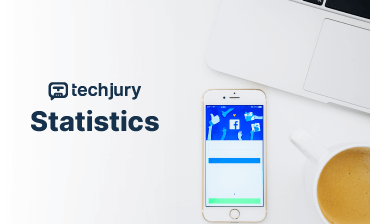The Digital Advertising Landscape: Understanding Facebook‘s Monetization Mastery
When you open Facebook today, you‘re stepping into one of the most sophisticated advertising ecosystems ever created. Behind every scroll, click, and interaction lies a complex mathematical symphony of data, targeting, and revenue generation that has transformed how businesses connect with consumers.
The Genesis of Facebook‘s Advertising Model
Facebook‘s journey from a college networking platform to a global advertising powerhouse represents more than just technological evolution—it‘s a masterclass in understanding human connectivity and digital monetization. Founded in 2004 by Mark Zuckerberg, the platform initially seemed like a simple social networking site. However, its true potential emerged when the company recognized the immense value of user data.
By 2012, Facebook began its transformative shift towards becoming an advertising giant. The platform‘s unique ability to collect granular user data—including interests, behaviors, demographics, and social connections—created an unprecedented targeting mechanism that would revolutionize digital marketing.
Revenue Dynamics: Unpacking the Numbers
Let‘s dive deep into the financial landscape that makes Facebook a digital advertising behemoth. In 2022, the platform generated a staggering \$135.94 billion in ad revenue, representing a complex ecosystem of digital interactions, user engagement, and sophisticated targeting algorithms.
The Geographic Revenue Breakdown
Interestingly, not all regions contribute equally to Facebook‘s revenue stream. North America remains the most lucrative market, contributing approximately 46.7% of total ad revenues. This disproportionate contribution highlights the economic disparities and digital advertising maturity across different global markets.
Regional Revenue Insights:
- North America: \$63.48 billion
- Europe: \$20.35 billion
- Asia-Pacific: \$35.61 billion
- Rest of World: \$16.50 billion
Technological Infrastructure: The Engine Behind the Ads
What makes Facebook‘s advertising platform so powerful isn‘t just its massive user base—it‘s the sophisticated technological infrastructure that enables hyper-precise targeting.
Machine Learning and User Profiling
Facebook‘s advertising ecosystem leverages advanced machine learning algorithms that continuously analyze user interactions. These algorithms create dynamic user profiles that go far beyond basic demographic information. By tracking likes, shares, comments, browsing habits, and even time spent on specific content, the platform builds incredibly nuanced user personas.
The mathematical complexity behind this profiling is staggering. Each user interaction generates multiple data points that are instantly processed, categorized, and integrated into increasingly sophisticated targeting models.
User Engagement: The Real Currency
While revenue numbers are impressive, user engagement remains the true measure of Facebook‘s advertising success. Consider these compelling metrics:
- 3.03 billion monthly active users
- Average user clicks on 12 ads per month
- 94% of ad impressions occur on mobile devices
- 90% of marketers consider Facebook their primary social media marketing platform
The Mobile-First Revolution
The shift towards mobile advertising represents a critical evolution in Facebook‘s revenue strategy. With 94% of ad impressions occurring on mobile devices, the platform has successfully adapted to changing user behaviors, creating seamless, immersive advertising experiences that feel native to the mobile environment.
Economic Implications and Market Trends
Facebook‘s advertising model has broader economic implications beyond its immediate platform. By providing accessible, scalable advertising solutions, the platform has democratized marketing for businesses of all sizes.
Small businesses, which might have previously struggled with traditional advertising channels, can now reach targeted audiences with minimal financial investment. The average small business spends between \$200 and \$1,500 monthly on Facebook ads, a remarkably low barrier to entry compared to traditional marketing methods.
Future Projections
Analysts predict continued growth, with expectations of a 9.7% increase in ad revenue by 2025, potentially reaching \$187.35 billion. This projection isn‘t just a number—it represents the platform‘s ongoing ability to innovate, adapt, and create value in an increasingly complex digital ecosystem.
Ethical Considerations and User Privacy
As Facebook continues to refine its advertising capabilities, critical ethical questions emerge. The platform‘s precision targeting raises important discussions about user privacy, data collection, and the boundaries of personalized advertising.
Recent regulatory changes, such as Apple‘s App Tracking Transparency feature, have already begun to impact Facebook‘s targeting capabilities. These developments underscore the delicate balance between personalized advertising and user privacy.
Strategic Recommendations for Marketers
For businesses looking to leverage Facebook‘s advertising platform, success requires more than just financial investment. Consider these strategic approaches:
- Develop a nuanced understanding of your target audience
- Create visually compelling, mobile-optimized content
- Utilize diverse ad formats (video, carousel, instant experience)
- Continuously test and refine your targeting parameters
- Monitor performance metrics beyond simple click-through rates
The Human Element: Beyond Pure Data
While we‘ve explored complex algorithms and revenue models, it‘s crucial to remember that at the heart of Facebook‘s advertising success is a fundamental human desire: connection. Each ad, each interaction, represents a potential moment of meaningful engagement between businesses and consumers.
Conclusion: A Dynamic, Evolving Ecosystem
Facebook‘s advertising platform is far more than a revenue generation tool—it‘s a sophisticated, dynamic ecosystem that reflects the complex interactions between technology, human behavior, and economic opportunity.
As we look towards the future, one thing becomes clear: the most successful businesses will be those that can navigate this ecosystem with creativity, empathy, and strategic insight.
About the Author
As a technology expert and data analysis specialist, I‘ve dedicated my career to understanding the intricate dynamics of digital platforms and their economic implications. My approach combines rigorous statistical analysis with a deep appreciation for the human stories behind the numbers.
